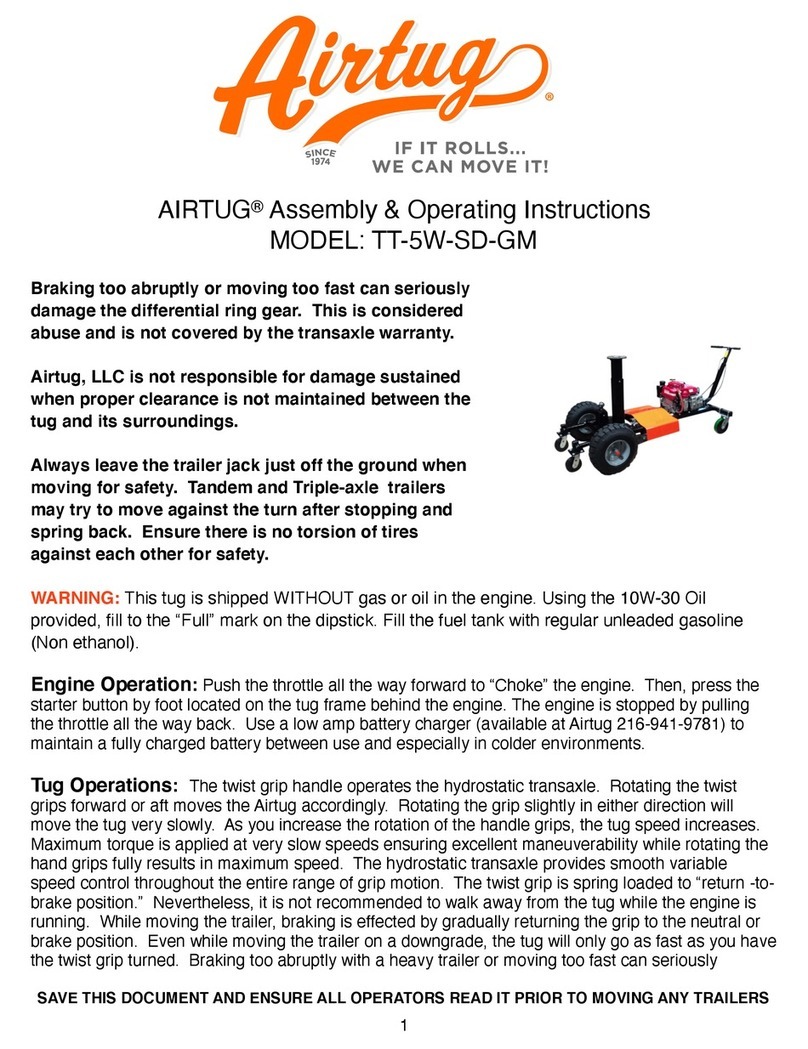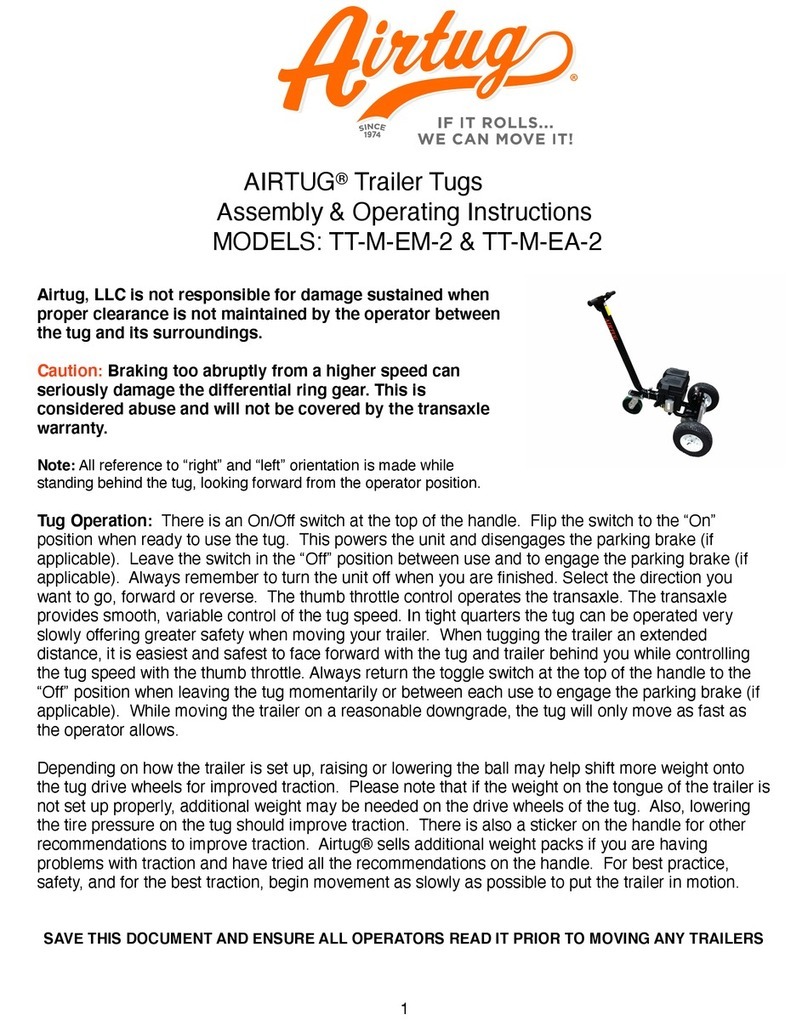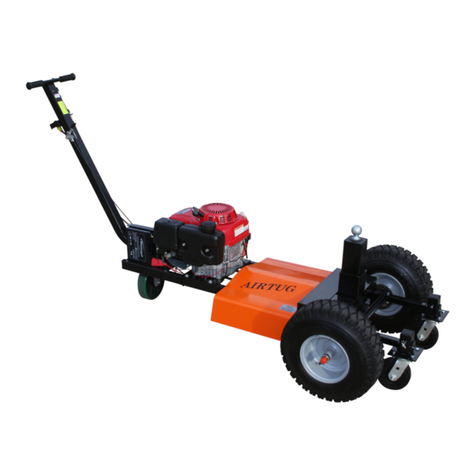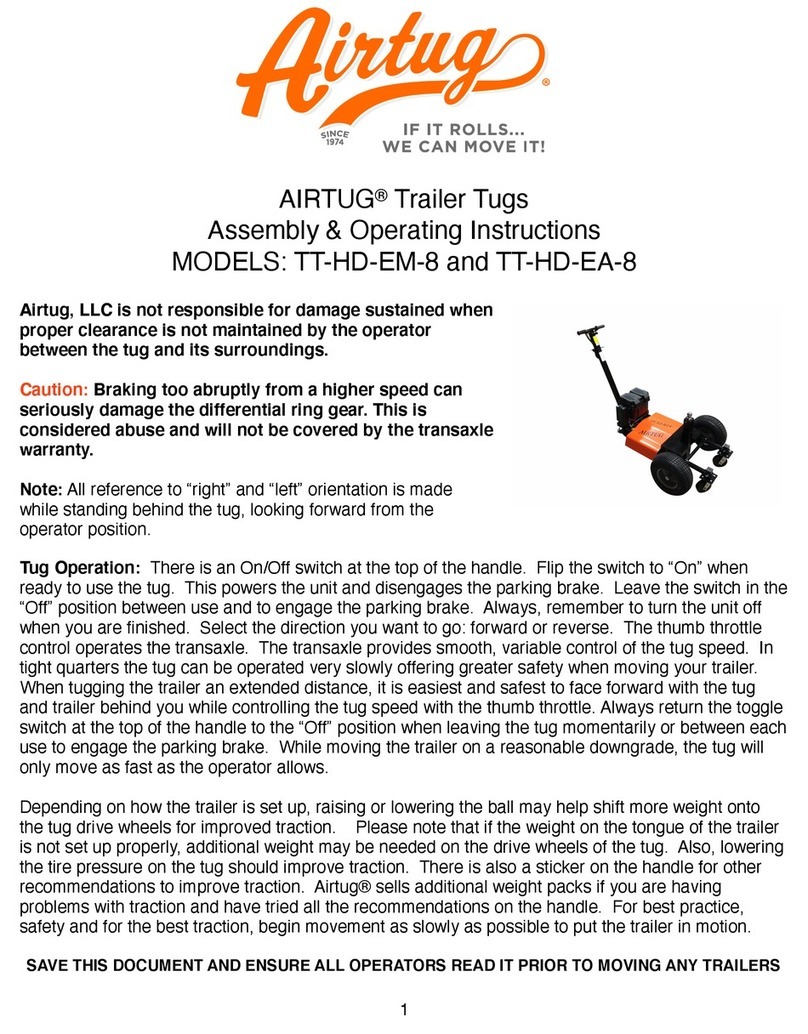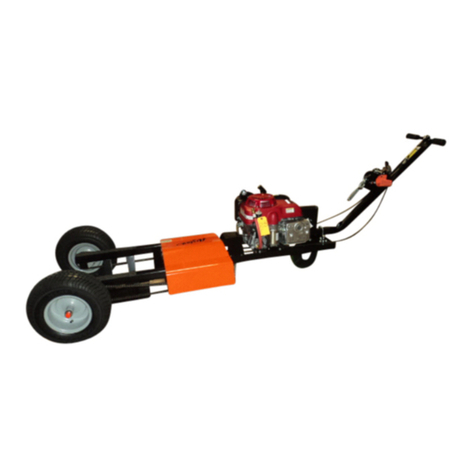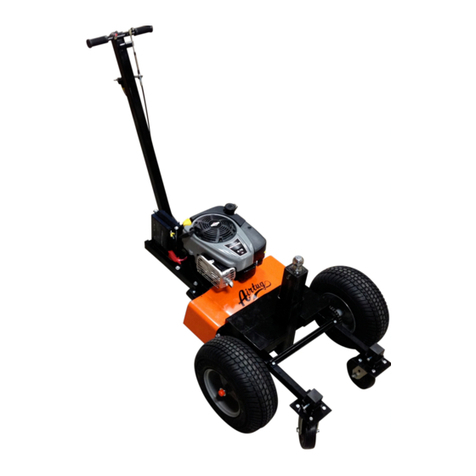General Maintenance
Tire Pressure: The tire pressure can range from 30 psi for lighter trailers to the maximum tire
pressure of 70 psi for heavier trailers. It should be reduced for added traction for lighter trailers.
Lower pressures improve traction.
Batteries: Keep the batteries fully charged. The battery performance will diminish measurably as
the ambient air temperature drops.
Hydrostatic Transaxle: This should be checked for oil level. Add 20W-50 oil if level is low.
Drive Wheel Bearings: Permanently lubricated.
Caster Zerk Fittings: Needs to be lubed periodically to ensure ease of caster wheel steering.
Drive Chains: Apply chain lube periodically depending on use and environment.
Tractive Ability: If the tug seems to be losing tractive ability, it’s an indication of a loose drive belt.
The engine plate is mounted on slotted holes and can be moved rearward to tighten the drive belt if
necessary. Simply loosen the nuts, push the engine plate towards the rear of the tug and tighten the
nuts firmly.
Wet Battery Maintenance: (If you purchased gel cell batteries, there is no battery maintenance required.)
1. New batteries require a full charge before use and need to be cycled several times before reaching full
capacity.
2. Battery connections should be kept tight at all times. Periodic inspection is recommended.
3. Vent caps should remain in place and tight at all times during operation and charging.
4. Keep batteries clean from all dirt and corrosion.
5. A maintenance routine should be set up to check the battery fluid level every two (2) weeks initially until an
adequate routine is established for the particular operating environment. The acid level should be 1/4”
above the battery cell plates. The acid level should never touch the fill well. Distilled or treated water should
be used to replenish the batteries. Care should be taken to avoid metallic contamination (iron).
6. Batteries should not be discharged to the point of no longer being able to power the tug. Keeping the
batteries fully charged will greatly reduce the risk of a dead battery when you need it most.
7. Batteries should be brought up to a full charge at the earliest opportunity using the built in 24V battery
charger with reverse polarity protection and float mode. The battery charger should be left on when the tug
is parked to maintain proper charging and maintenance of batteries at all times. Keeping the batteries fully
charged will reduce the risk of freezing in cold temperatures.
8. Avoid charging the batteries when the ambient temperature exceeds 120oF.
9. As batteries age, the maintenance requirements increase. Maintain the water level. Older batteries will take
longer to fully charge.
10. Periodic battery testing is an important preventative maintenance procedure. Hydrometer readings of each
cell while fully charged gives an indication of balance and the true charge level. Imbalance could mean the
need for equalizing, and is also a sign of potentially improper charging or a bad cell. Voltage tests (open
circuit, charged or discharged) can identify a bad or weak battery. Load testing will identify a bad battery
when other methods fail. A weak battery will cause premature failure of a companion battery.
11. Extreme temperatures can substantially affect battery performance and charging. Cold temperatures
reduce battery capacity and retard charging. Heat increases water usage resulting in overcharging.

